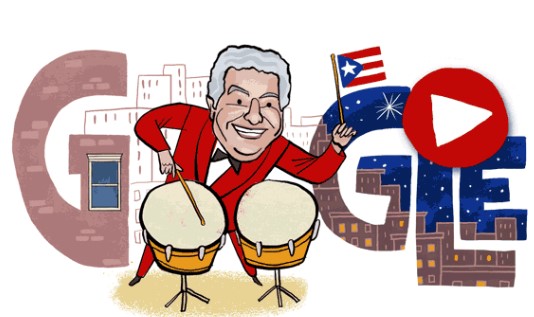Tito Puente: Google doodle celebrates life & legacy of ‘The King of Latin music’

- Country:
- United States
Spoiler Alert: This article contains spoilers. Proceed with caution if you have not watched the show/movie.
Today Google doodle tribute to Tito Puente, the musician and internationally-renowned entertainer. In honor of U.S. Hispanic Heritage Month, Google celebrates the life and legacy of American “Nuyorican” with an animated video illustrated by New York-based Puerto Rican artist, Carlos Aponte.
Tito Puente is also known as Ernest Anthony Puente Jr. He is also renowned as a songwriter, bandleader, and record producer of Puerto Rican descent. He is best known for dance-oriented mambo and Latin jazz compositions that endured over a 50-year career. His most famous song is “Oye Como Va.”
With a career spanning five decades, Tito Puente is often referred to as “El Rey de Los Timbales” and “The King of Latin music.” On this day in 2021, the Tito Puente Monument was unveiled in East Harlem, New York City.
Tito Puente was born on April 20, 1923, at Harlem Hospital Center in New York City’s Spanish Harlem. He was surrounded by Puerto Rican, Cuban, and big band music growing up, and showed significant musical talent from an early age. He started his career as a drummer in his early teens and found his big break playing for Federico Pagani’s Happy Boys and Machito’s Orchestra. He served in the Navy during World War II, playing alto saxophone as the ship’s bandleader—along with over ten other instruments. He continued his studies at the Juilliard School of Music after the war.
Puente started his own band, the Tito Puente Orchestra, in 1948 and quickly earned a reputation for his performances that encouraged audiences to get on the dance floor. Puente was known for his awe-inspiring skills on the timbales (or timpani/kettledrums), as well as for the way he combined big band instrumentation and jazz harmonies with Afro-Cuban music. He recorded an astounding 118+ albums and is credited on dozens more—more than any other timbales bandleader to date. This journey began with Ran Kan Kan, his first professional track recording and the soundtrack of today’s Doodle.
Beyond the mambo movement, Puente experimented with other genres of Latin music such as the Boogaloo, Pachanga, and eventually Salsa. He was considered a musical pioneer for his creativity and experimentation and is widely credited for popularizing Latin music in the United States. In 1969, he was awarded the key to New York City.
Besides the musical merits he received throughout his career, Puente was also deeply dedicated to creating opportunities for the Latin community. In 1979, he introduced a scholarship fund that supported promising, young Latin percussionists for over 20 years.
Puente’s success, presence, and musicality are widely known and respected to this day. After his passing, many waited in line for days to say their goodbyes. He was posthumously recognized at the first-ever Latin Grammy Awards, and the Harlem street where he grew up — E. 110th Street — was renamed Tito Puente Way to honor his life and legacy.
Source: Google doodles
Also Read: Jale İnan: Google doodle celebrates first female Turkish archaeologist










